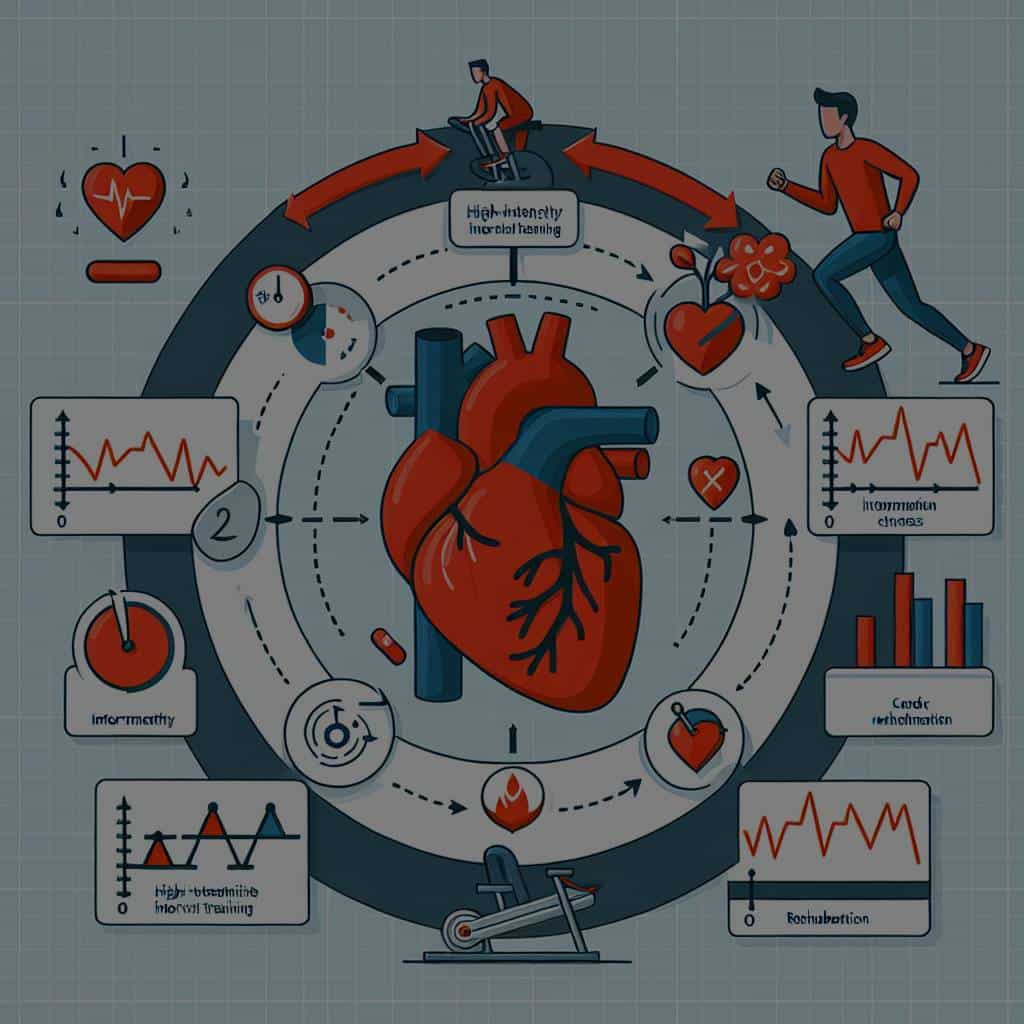What Is the Role of High-Intensity Interval Training in Cardiac Rehabilitation?

Exercise is a crucial component of cardiac rehabilitation, a comprehensive program designed to improve the quality of life for individuals living with heart disease or other forms of cardiac conditions. Among the various forms of exercise, High-Intensity Interval Training (HIIT) has recently gained substantial attention in the realm of cardiac rehabilitation. The question now arises: What is the role of HIIT in cardiac rehabilitation?
Role of Exercise in Cardiac Rehabilitation
Before delving into the role of HIIT in cardiac rehabilitation, it is essential to understand the pivotal role of exercise in this context. Exercise has been universally recognized as a cornerstone of cardiac rehabilitation.
A lire en complément : How to Address Nutrient Deficiencies in Plant-Based Diets?
Exercise not only improves aerobic capacity but also positively impacts various cardiovascular risk factors. It reduces body weight, lowers blood pressure, improves lipid profile, and enhances glucose tolerance. These benefits, in turn, help in improving overall cardiac function and reducing the risk of future cardiac events.
A study published in the Journal of the American College of Cardiology highlighted the significance of exercise in cardiac rehabilitation. It demonstrated that cardiac patients who participated in a structured exercise program had a 30% lower mortality rate compared to those who did not.
Dans le meme genre : What Techniques Are Most Effective for Reducing Anxiety Before Surgery?
Understanding High-Intensity Interval Training (HIIT)
High-Intensity Interval Training, commonly known as HIIT, is a form of exercise that alternates between periods of intense, high-intensity exercise and periods of rest or lower-intensity exercise.
A typical HIIT workout might involve running at a high speed for one minute, then walking for two minutes, and repeating this cycle for 20 to 30 minutes. The intensity of these workouts is often near an individual’s maximum heart rate.
Scientific studies have suggested that HIIT workouts can provide the same, if not greater, health benefits as longer periods of moderate-intensity exercise. A study published in the Journal of Physiology found that three minutes of intense exercise per week can increase aerobic capacity and improve insulin sensitivity.
HIIT in Cardiac Rehabilitation: A Closer Look
HIIT has been gaining traction in the field of cardiac rehabilitation due to its potential benefits. Several studies have investigated the role and effectiveness of HIIT in patients with cardiac disease.
A Pubmed search reveals numerous studies that have examined the effectiveness of HIIT in cardiac rehabilitation. A systematic review and meta-analysis, published in the European Journal of Preventive Cardiology, found that HIIT significantly improves cardiorespiratory fitness in patients with coronary heart disease.
Another study conducted by Norwegian scholars found that HIIT is safe for patients with heart failure. The researchers reported that patients who engaged in HIIT experienced considerable improvements in peak oxygen uptake, exercise capacity, and endothelial function.
Implementing HIIT in Cardiac Rehabilitation Programs
Implementing HIIT in cardiac rehabilitation programs requires careful consideration. The intensity of exercise must be carefully adjusted to suit the individual needs and capacities of patients.
A common practice is to start with a lower intensity and gradually increase it as the patient’s fitness improves. The duration of the high-intensity intervals and the recovery periods can also be adjusted based on the patient’s progress.
It is essential to monitor patients closely during HIIT sessions. Any signs of discomfort, chest pain, or abnormal heart rhythms should prompt immediate medical attention.
In conclusion, HIIT represents a promising modality that can be incorporated into cardiac rehabilitation programs. However, further high-quality studies are needed to fully understand the long-term effects and optimal implementation of HIIT in this context.
The Future of HIIT in Cardiac Rehabilitation
Looking ahead, the future of HIIT in cardiac rehabilitation appears promising. As more studies are conducted, and our understanding of HIIT increases, it is likely that more cardiac rehabilitation programs will incorporate HIIT into their regimen.
However, it is also important to remember that while HIIT offers numerous benefits, it is not suitable for all cardiac patients. The appropriateness of HIIT should be determined on a case-by-case basis, taking into account the patient’s overall health condition, fitness level, and personal preferences.
Importantly, any exercise regimen, including HIIT, should be part of a comprehensive cardiac rehabilitation program that also includes dietary modifications, medication management, and lifestyle changes. Whether it’s HIIT or another form of exercise, the ultimate goal is to help cardiac patients lead a healthier, more active life.
The Impact of HIIT on Specific Cardiac Conditions
High-Intensity Interval Training (HIIT) has demonstrated considerable effectiveness for specific cardiac conditions such as heart failure and coronary artery disease. A multitude of studies available on Google Scholar suggest that this type of exercise training can lead to substantial improvements in these conditions.
In the case of heart failure, a systematic review and meta-analysis of randomised controlled trials, published in the Heart Failure Reviews, found that HIIT significantly enhances exercise capacity, quality of life, and cardiac function in heart failure patients. The same review also reported that HIIT is as safe as moderate intensity continuous training (MICT) for these patients.
For patients with coronary artery disease, a study published in the American Journal of Cardiology found that HIIT significantly improves peak oxygen uptake, a vital indicator of cardiovascular fitness. This study also reported that patients who engaged in HIIT experienced fewer cardiac events compared to those who performed traditional moderate intensity exercise.
It’s important to understand that while these findings are encouraging, HIIT may not be suitable for all patients with these conditions. The prescription of HIIT should be individualised, taking into account the patient’s health status, cardiac function, and fitness level.
Conclusion: HIIT – A Valuable Tool in Cardiac Rehabilitation
To sum it up, High-Intensity Interval Training (HIIT) is a powerful tool that can significantly enhance the effectiveness of cardiac rehabilitation programs. Its potential to improve cardiovascular fitness, heart function, and quality of life is well-documented in the scientific literature.
However, like any other form of exercise, HIIT is not a one-size-fits-all solution. The suitability of HIIT for a particular patient should be assessed on an individual basis, considering the patient’s overall health, fitness level, and personal preferences. It’s crucial to monitor patients closely during HIIT sessions and adjust the intensity and duration of the intervals according to their response.
Although more high-quality studies are needed to fully understand the long-term effects and optimal implementation of HIIT in cardiac rehabilitation, current evidence points towards a growing role for HIIT in this field.
Moreover, we must remember that HIIT is just one piece of the puzzle. A comprehensive cardiac rehabilitation program should encompass not only aerobic exercise but also other lifestyle modifications such as a healthy diet, proper medication management, and stress reduction techniques.
Indeed, whether it’s HIIT, MICT, or another form of exercise, the ultimate aim of cardiac rehabilitation is to help individuals with heart disease lead healthier, more active lives. As we continue to advance our knowledge and expertise in this field, the role and value of HIIT in cardiac rehabilitation will become even more apparent.
